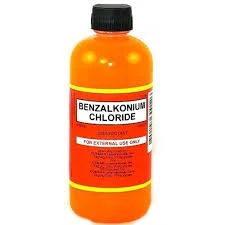Synthesis and Applications of Poly(maleic Anhydride) in Polymer Chemistry
The Versatility of Polymaleic Anhydride Applications and Benefits
Polymaleic anhydride (PMA) is a versatile synthetic polymer that has garnered significant attention in various industrial applications due to its unique chemical properties. As a derivative of maleic anhydride, PMA exhibits a range of functionalities that make it suitable for a multitude of uses, particularly in fields such as water treatment, construction, and pharmaceuticals. This article explores the structure, properties, applications, and benefits of polymaleic anhydride, highlighting its crucial role in modern technology and industry.
Chemical Structure and Properties
Polymaleic anhydride is formed through the polymerization of maleic anhydride, which consists of a five-membered cyclic anhydride. When maleic anhydride undergoes polymerization, it can produce linear or branched structures depending on the reaction conditions. The resulting PMA contains alternating carbon-carbon double bonds and anhydride groups, which contribute to its reactivity and solubility in various organic solvents.
One of the most important properties of PMA is its ability to form stable complexes with metal ions. This characteristic is particularly advantageous in water treatment applications, where PMA is used as a scale inhibitor, preventing the precipitation of minerals such as calcium and magnesium. Additionally, the anhydride functional groups in PMA can undergo various chemical modifications, allowing for the development of derivatives tailored to specific applications.
Applications of Polymaleic Anhydride
1. Water Treatment PMA is widely utilized in water treatment facilities to control scaling and corrosion in pipelines and boilers. By dispersing calcium carbonate, calcium sulfate, and other salts, PMA enhances water quality and extends the lifespan of equipment. As a polymeric dispersant, it effectively inhibits the nucleation and growth of scale-forming minerals, making it an essential additive in various industrial processes.
2. Construction In the construction industry, PMA is valued for its ability to enhance the performance of cement and concrete. By incorporating PMA into cement formulations, it improves workability, reduces water demand, and increases the overall strength of concrete. Furthermore, PMA can act as a superplasticizer, enabling the production of high-performance concrete with reduced permeability and increased durability.
polymaleic anhydride

3. Pharmaceuticals The pharmaceutical industry has also recognized the potential of PMA, particularly in drug delivery systems. PMA can be functionalized to carry therapeutic agents, allowing for targeted delivery and controlled release. Its biocompatibility and ability to form hydrogels make it an ideal candidate for applications in wound healing and tissue engineering.
4. Agriculture PMA is utilized in agriculture as a soil conditioner and a water-retaining agent. Its unique structure allows it to improve soil texture, enhance moisture retention, and promote nutrient availability. As a result, PMA contributes to sustainable agricultural practices by reducing the need for chemical fertilizers and irrigation.
Benefits of Polymaleic Anhydride
The benefits of polymaleic anhydride extend across its broad range of applications. Its versatility, coupled with its environmentally friendly profile, makes it an attractive choice for manufacturers and industry professionals. Here are some key benefits of PMA
- Eco-friendly PMA is often derived from renewable resources, making it a sustainable alternative to traditional synthetic polymers. - Cost-effective The use of PMA in various applications can lead to significant cost savings by increasing efficiency and reducing material waste. - Enhanced performance PMA’s unique properties contribute to improved performance in products, enhancing functionality and extending the lifespan of materials. - Customization The ability to modify PMA through chemical reactions allows manufacturers to tailor it to specific industry needs, creating specialized products for various applications.
Conclusion
Polymaleic anhydride is a remarkable polymer with a diverse range of applications across multiple industries. Its unique properties, including scale inhibition in water treatment, improved performance in construction materials, and potential in pharmaceuticals and agriculture, demonstrate its versatility and significance in modern technology. As industries continue to seek sustainable and efficient solutions, the prominence of PMA is likely to grow, solidifying its role as a key component in innovative products and processes. With ongoing research and development, polymaleic anhydride is poised to contribute significantly to advancements in material science and industrial applications in the years to come.
-
Water Treatment with Flocculant Water TreatmentNewsJun.12,2025
-
Polymaleic AnhydrideNewsJun.12,2025
-
Polyaspartic AcidNewsJun.12,2025
-
Enhance Industrial Processes with IsothiazolinonesNewsJun.12,2025
-
Enhance Industrial Processes with PBTCA SolutionsNewsJun.12,2025
-
Dodecyldimethylbenzylammonium Chloride SolutionsNewsJun.12,2025





